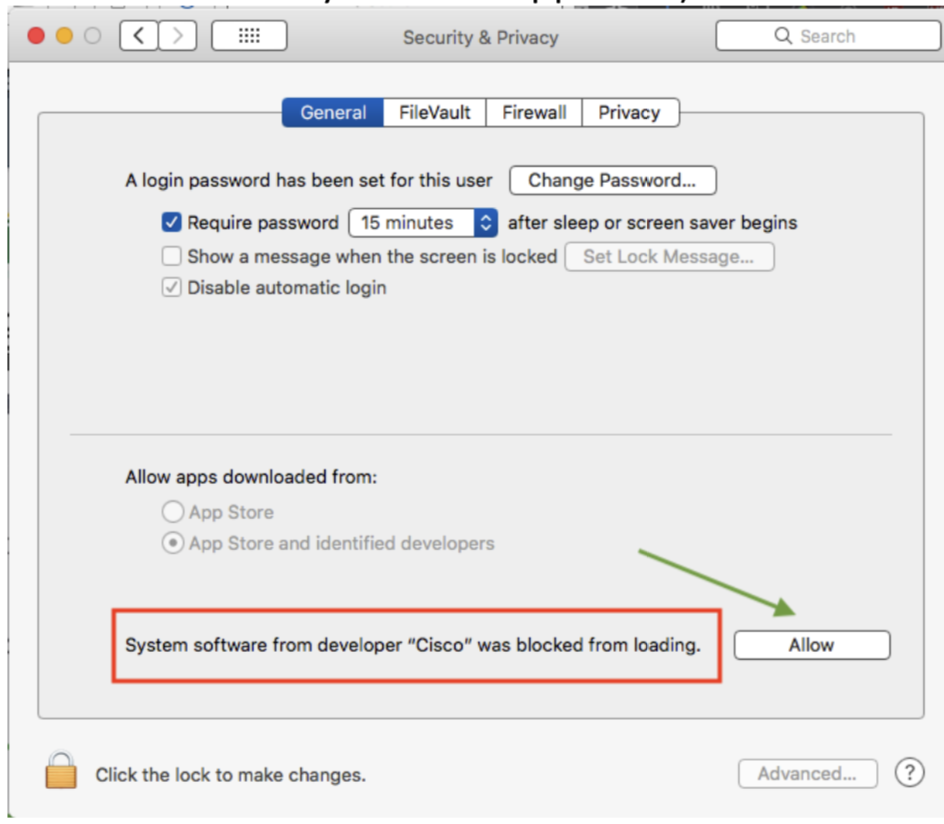Follow the instructions below to setup the Cisco AnyConnect VPN client on Mac.
- Advanced Instructions For Anyconnect Vpn For Mac Os
- Advanced Instructions For Anyconnect Vpn For Mac Windows 10
- Cisco Anyconnect Vpn Mac
- Cisco Anyconnect Vpn Client Download Pc
- Cisco Anyconnect Vpn Client Windows 10 Download
Advanced Instructions For Anyconnect Vpn For Mac Os
- Download the Cisco VPN client to your computer from the Tech Tab on myBama.
- Double-click the downloaded file, and accept the defaults. It will install and the box below will pop up. Click “Connect.” If a full URL is required, enter uavpn.ua.edu/campus
- You should then see a screen like the one below. Enter your myBama credentials in the username and password fields. The “Second Password” field is for DUO. You have three options to authenticate with DUO. You may type “push” to receive a push notification, “phone” to receive a phone call, or enter a passcode from the DUO app. You will need an active DUO account to obtain VPN access.
- All dialog boxes will disappear, and you will be connected. You can confirm connectivity by checking the Cisco AnyConnect icon at the top right of your screen. The lock indicates connected. Click on this icon or your door lock icon to connect/disconnect.
Step 5 – Drag the Cisco AnyConnect from your applications folder to your Dock.
*Note* If you do not completely quit the Cisco AnyConnect client after disconnecting, on subsequent connections you may see an entry like the one below. Please choose “campus” from the dropdown list. The uavpn-r.ua.edu entry will not connect.
NOTE: If you are using a university-owned device supported by OIT or your local IT staff, consult with them first before installing the VPN client.
The path, or unique location of, the Cisco AnyConnect VPN for Mac OS X file system is /opt/cisco/vpn. Command Line Access. The command line interface (CLI) is available from a shell window. With the executable in the path, execute the client. The CLI has a command parser that will aid you in connecting, disconnecting, gathering statistics, etc. To connect to the VPN from your Mac computer, you need to install the Cisco AnyConnect VPN client. The following instructions are for computers NOT on Jamf Pro (Mason Self Service). If your computer is on Mason Self Service, the Cisco AnyConnect VPN should already be installed.
Contents
Requirements
- Operating system: MacOS 10.13.0 or newer
NOTE: This software may work on older versions of macOS but is not officially supported by Cisco or NC State OIT. - Free hard disk space: 50 MB
- Minimum display resolution: 1024 by 640 pixels
- Administrator privileges: For installation
- Security and Privacy setting:
Allow apps downloaded from:
“App Store and Identified developers.”
For details, see Safely open apps on your Mac.
Installing the Software
- Download the installer file. For macOS 10.15 Catalina, download the updated Cisco AnyConnect 4.9 Client.
You may be asked to log in with your Unity ID and password before downloading. - Double-click on the anyconnect-macos-x.x.pkg file. (where x.x is a version number)
- In the Introduction window,
click on the Continue button (lower right). - In the Destination Select window,
choose the disk where you want to install the software (usually Macintosh HD).
Click on the Continue button (lower right). - In the Installation Type window,
click on the Install button (lower right). - In the next window, authorize the installation on your computer by entering:
- User name you use to log in to your computer (not your Unity ID).
- Your computer login password.
Then click on the Install Software button.
- In the Installation window,
a progress bar shows the status.
Installation may take a few minutes. - In the Summary window,
which shows the installation was successful,
click on the Close button.
Using VPN software: Connecting and Disconnecting
Advanced Instructions For Anyconnect Vpn For Mac Windows 10
Locating the client

Cisco Anyconnect Vpn Mac
- In the macOS Finder menu,
select Go. - Open the Applications folder.
- Open the Cisco folder inside it.
- In the folder contents, locate
Cisco AnyConnect Secure Mobility Client.
Connecting to vpn.ncsu.edu
- In the Cisco folder, double-click on:
Cisco AnyConnect Secure Mobility Client - In the Ready to connect field, type:
vpn.ncsu.edu
if it does not already appear there. - Click on the Connect button.
- In the window that opens,
from the drop-down menu, select your Group:
1-Faculty-and-Staff: group for all employees.
2-Student: group for all students.
3-Student-Health-Center: specialized group for Student Health Center.
(Group assignment is manual.)
4-Vendor: specialized group for vendor access.
5-OIT-Staff: specialized group for OIT staff.
6-Faculty-and-Staff-FT: group for all employees with all connections in a full tunnel.
7-Student-FT: group for all students with all connections in a full tunnel. - Enter your Unity ID (username), Unitypassword and in the Second Password Field type either push, sms, or a passcode to authenticate.
- Click on the OK button.
- The Duo software will then either prompt for confirmation or send a passcode. To learn more about authentication with Duo see https://oit.ncsu.edu/it-security/2fa/.
- On the right side of the macOS menu bar,
a padlocked AnyConnect icon:
indicates a completed, secure connection to vpn.ncsu.edu. - A similar icon should appear in your dock.
Disconnecting the VPN session
Cisco Anyconnect Vpn Client Download Pc

When you finish using your VPN session, be sure to do the following:
Cisco Anyconnect Vpn Client Windows 10 Download
- On the macOS menu bar,
click on the padlocked AnyConnect icon: - From the VPN menu that appears,
select Disconnect. - Disconnection is indicated by the absence of the padlock from the icon: